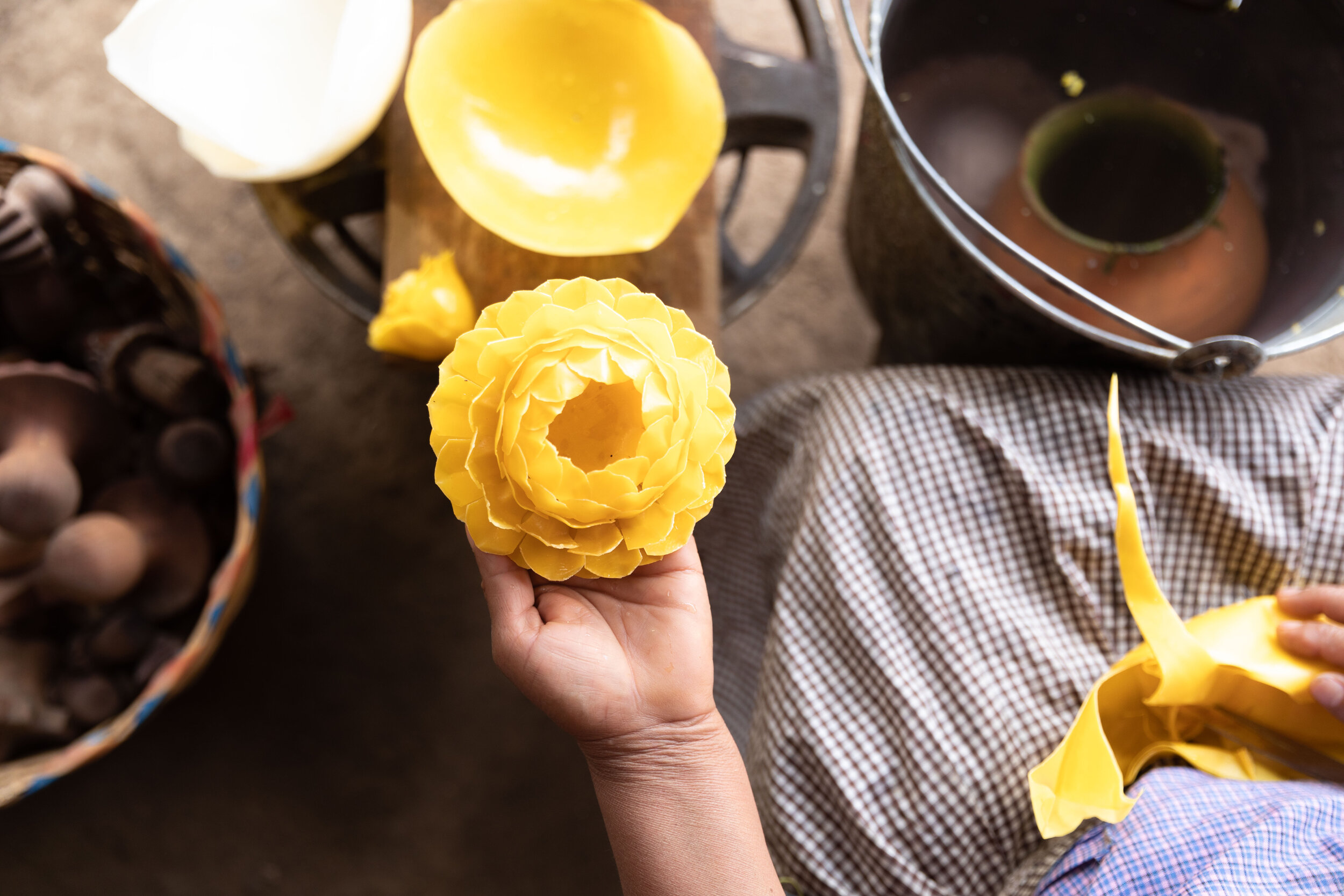Photo Essay by Jimena Peck - first published in the Mexico magazine.
In the mountain village of Teotitlán del Valle, nestled in the shadow of Oaxaca’s cascading sierra, candlemakers have long held an important community role; their meticulously crafted wares forming the heart of traditional ceremonies, religious practices and daily celebrations. Today, the candles continue to shine brightly, illuminating the small Oaxacan town’s future. These are no ordinary votives.
The velas de concha - ‘shell’ candles unique to the village - have cast their soft white glow over the residents’ homes and rituals for years. During my visit to Oaxaca’s lush central valley, I met Viviana, the matriarch of a clan of artisans, who has been a candlemaker in Teotitlán for more than 50 years. Now, against the odds, her sons and daughters-in-law take part in the family tradition; a practice that has anchored them for four generations.
These candles have always been highly valued goods in Oaxaca, prized for their beauty and intricacy - some can rise above two metres tall and feature hundreds of detailed decorations. The process is equally fascinating, combining deft technical skill with finesse and the special touch that only a life-long Teotitlán candlemaker can bring.
The candle’s skeleton - or basic structure - is made as the wick hangs from a large circular ring attached to the high ceiling of Viviana’s patio. They pour hot wax over the wick, increasing the candle’s size and diameter layer by layer in a process called dripping.
The delicate shell or flower-like adornments that give the candles their name are the most creative part of the process. This is when Viviana and her daughters-in-law get expressive, enjoying the aesthetic challenges each candle presents. They carefully craft wax flowers in wooden moulds which they dip in hot wax, cool in a pail of water, and then cut with scissors, forming the blooms’ petals. Next, they wrap a mylar ribbon around the candle’s skeleton, insert a wire into the wax flower’s centre, gently heat each wire over a flame, and attach it to the candle. This is done again and again, until the candle bursts with lovely, scalloped curves. Each flower is unique, its contours brought to life by the soft light filtering through the workshop’s window.
In Teotitlán del Valle, time doesn’t stand still - the bustling Oaxacan capital lies just down the modern highway and the noise of cars, tiny televisions and smartphones buzzes through the village. What’s remarkable about Teotitlán, though, is how its rich, meaningful traditions are kept alive, seamlessly fitting into daily life in modern Mexico. It was spellbinding to watch Viviana and her family craft velas de concha, each painstaking detail resulting in a work of exquisite artistry. For them, the candles flicker warmly, lighting their path as they make their livelihood into an art form.














